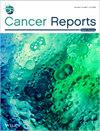An up-To-Date Review of Elesclomol and Its Nano-Formulations in Cancer Therapy
Abstract
Background
Elesclomol (ES) is a promising anticancer compound that exerts its effects through multiple mechanisms. It acts as a copper (Cu(II)) ionophore, forming an ES–Cu complex within cancer cells and inducing a novel form of cell death called cuproptosis.
Aim
To provide an up-to-date review on elesclomol and its nano-formulations with a particular focus on cancer therapy.
Sources
Literature was collected by manually searching in Pubmed, and Google Scholar, clinicaltrials.gov through March 2025.
Content
This review provides an overview of the discovery and development of the ES molecule, including its physicochemical properties. New insights into the intracellular interactions of ES with copper and the mechanisms of copper transportation are then explained. The recent clinical outcomes of ES in cancer therapy, both as a monotherapy and in combination with paclitaxel or carboplatin, are summarized. While the initial clinical trials showed promise, more studies are focusing on the preclinical investigations of the ES–Cu complex. Nanomedicine-based formulations have emerged as a strategy to enhance the intracellular delivery of ES as well as its therapeutic effects, with several ES–Cu nanomedicines currently under development. The recent nanoparticle delivery strategies of ES are discussed. This comprehensive review provides an up-to-date overview of the recent advancements in ES study, including its novel mechanism of action, clinical progress, and the potential of nanomedicine-based approaches to improve its therapeutic efficacy in cancer treatment.


 求助内容:
求助内容: 应助结果提醒方式:
应助结果提醒方式:


